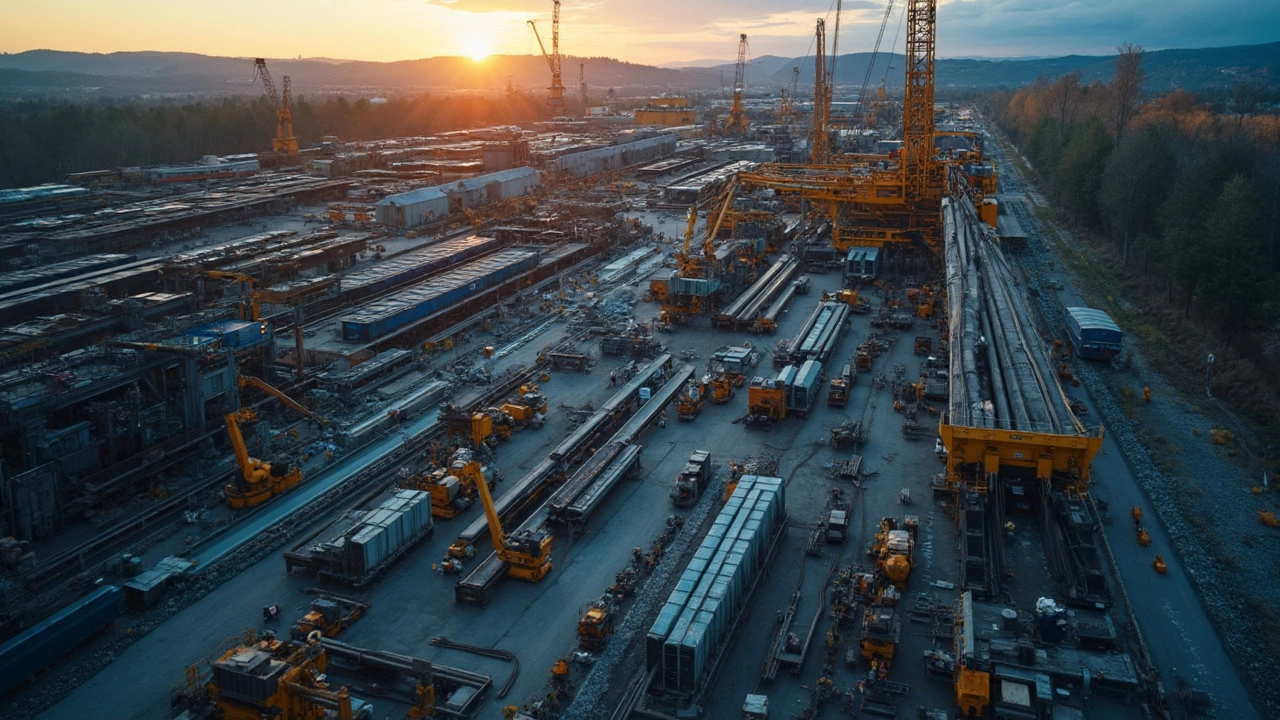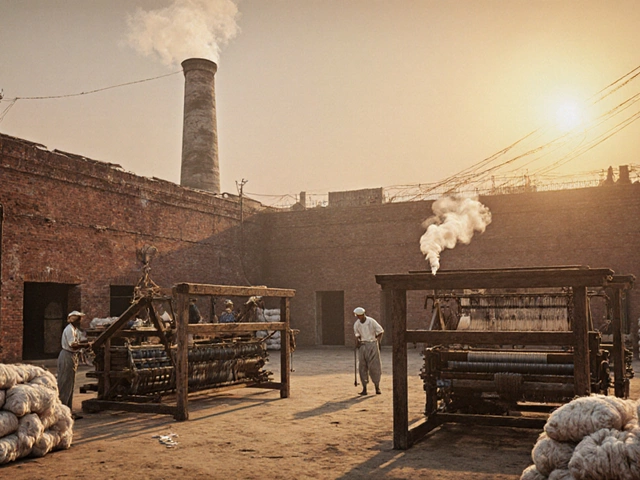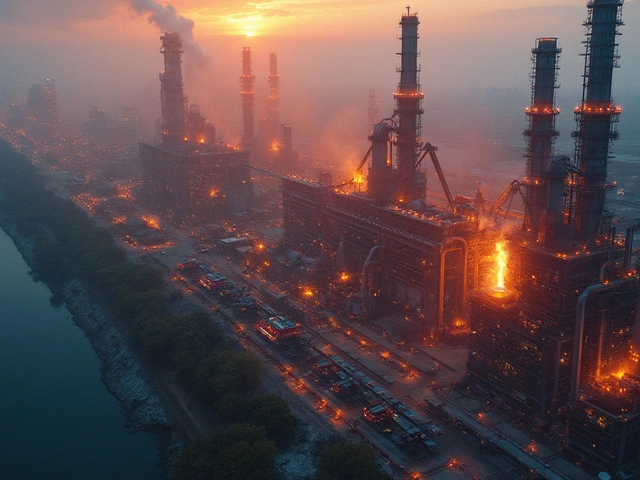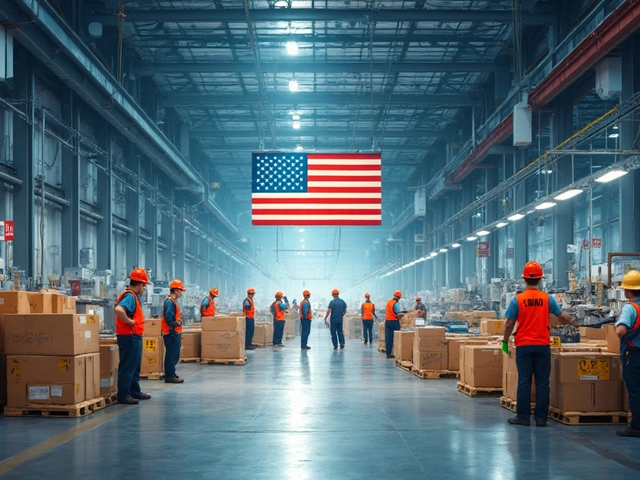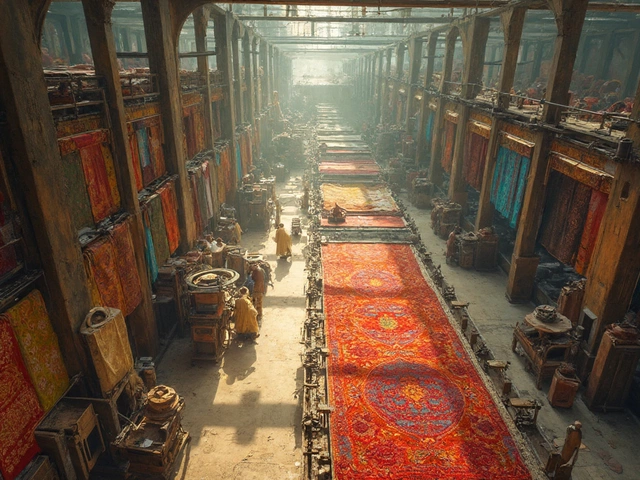Ever wondered who stands at the top of the steel fabrication ladder in the US? It's quite a competitive game, and everyone wants that top spot. The company playing the giant here isn't just large in size; they're massive in terms of influence and innovation too.
Steel fabrication isn't just about making big beams or fancy metal sculptures. It's about creating the backbone of the country—literally and metaphorically. From skyscrapers piercing the sky to bridges spanning vast rivers, steel fabricators play a huge part in shaping our landscape. The biggest name here? Nucor Corporation. These folks have been setting the pace for quite some time, and they're not slowing down.
Nucor leads by embracing new technologies and ensuring sustainability in their processes, which is crucial in today's eco-conscious market. Want to keep up with what they're doing? Stick around as we dig into what makes them tick and how they’re shaping our world.
- Understanding Steel Fabrication
- The Current Industry Leader
- Innovations and Technologies
- Impact on the Economy
- Future Trends in Steel Fabrication
Understanding Steel Fabrication
Steel fabrication is where the rubber meets the road in construction and manufacturing. But what does it actually involve? At its heart, it's the process of creating usable steel products from raw materials. It's not just about bending and cutting; it's about precision and innovation.
Let's talk about the big stuff first. Steel fabrication includes designing and building structures like skyscrapers, bridges, and warehouses. It involves various processes such as cutting, bending, and assembling using modern machinery and technology.
The Fabrication Process
So, how's it all done? Here’s a quick rundown:
- Cutting: Using tools like lasers or plasma torches for precision cutting. This is key to ensuring each piece fits seamlessly into the final product.
- Bending: This involves shaping the steel through press brakes or rolling machines.
- Assembling: This is where it all comes together. Welding, fastening, or riveting turn individual parts into the final product, ready to hold up buildings or form crucial vehicle parts.
Each step of the way, fabricators need to ensure quality and precision, especially when creating structures that form the backbone of modern infrastructure.
| Year | Fabrication Output (Million Tons) |
|---|---|
| 2020 | 104.2 |
| 2021 | 111.7 |
| 2022 | 115.3 |
Why Fabrication Matters
"Steel is the world’s most important engineering and construction material," according to the World Steel Association.
The fabrication of steel products is critical to the development of infrastructure across the globe. It plays a significant role in various industries, from construction to automotive. The durability and flexibility of steel make it an essential component in these sectors. And in the US, firms like Nucor lead the charge by pushing innovation and sustainability in steel fabrication.
So, when you're driving over a bridge or standing in a skyscraper, think about the intricate processes behind those massive structures. It's not just about brute strength; it's about careful engineering and precise fabrication.
The Current Industry Leader
In the sprawling realm of steel manufacturing, one name consistently rings louder than the others: Nucor Corporation. These folks aren't just the largest steel fabricator in the United States by sheer volume—which is impressive on its own—they've turned responsibility and innovation into a mantra.
Founded back in 1940, Nucor now operates around 300 facilities all over the US. That’s not your small-town opera; it’s a full-blown symphony of efficiency and scale. They employ about 30,000 people, and each one is focused on making Nucor's vision of sustainable steel production a reality.
Trailblazing with Technology
You might be wondering how they snagged that top spot. For starters, they're huge advocates for tech. In fact, Nucor was the first company to commercially use electric arc furnaces, which are cleaner and more energy-efficient compared to traditional methods. This move made them more cost-effective and kind to Mother Earth.
Plus, they keep pushing boundaries. For example, they’re deeply invested in advancing mini-mill technology, which lets them make steel by recycling scrap metal—think of it as the ultimate eco-friendly production line.
Corporate Commitment to Sustainability
Nucor takes sustainability seriously. They've made substantial commitments to reducing their carbon footprint, with plans to reach net-zero emissions by 2050. It's a tall order, but these goals set them apart from competitors who are still playing catch-up.
Financial Facts at a Glance
| Aspect | Statistic |
|---|---|
| Annual Steel Production | Approx. 30 million tons |
| Market Share in US Steel | 20% |
| Revenue (2023) | Approx. $34 billion |
If there's anything we can learn from Nucor, it's that being a leader in the steel industry isn't just about clout or scale—it's about a willingness to innovate, a commitment to sustainability, and a keen eye on the future.

Innovations and Technologies
When it comes to steel fabrication, staying ahead of the curve isn't just about producing more; it's about producing smarter. Nucor Corporation, leading the charge in the US, knows this well. They've embraced some cutting-edge innovations that keep them at the forefront of the industry.
Advanced 3D Modeling and Simulation
Today's steel fabricator can't rely solely on blueprints and guesswork. Nucor utilizes advanced 3D modeling and computer simulations to design complex structures down to the finest detail. This doesn't just speed up the process; it also ensures more precision and less waste, which cuts costs and helps the environment.Automated Production Lines
Automation is another big winner here. Robots and automated systems have taken over tasks that used to require a small army of workers. This doesn't just boost production numbers; it minimizes errors and creates a safer environment for human operators. Plus, it allows for 24/7 operation without fatigue, reducing downtime significantly.Green Steel Manufacturing
Everyone's talking about sustainability, and US steel manufacturing is no exception. Nucor prides itself on being one of the greenest in the biz, using recycled steel for most of its products. They also heavily invest in technologies that reduce emissions and conserve energy during production. It's not just good for the planet; it's good for their bottom line, too.In fact, here's a quick look at some of their initiatives:
| Initiative | Impact |
|---|---|
| Recycled Steel Usage | Nearly 90% of steel is recycled, reducing raw material needs |
| Energy Efficiency Programs | Cut energy consumption by up to 30% |
| Emission Reduction Technologies | Significantly reduces carbon footprint |
Collaborative Robots (Cobots)
Cobots work side-by-side with human workers, enhancing productivity without replacing personnel. These smart robots handle repetitive tasks, allowing human experts to focus on more complex problem-solving duties.Nucor’s forward-thinking approach illustrates why they're a leader. By mixing tech advancements with a solid nod toward ecological responsibility, they're setting a gold standard for steel industry leaders to follow.
Impact on the Economy
When talking about the powerhouse that is the steel industry in the U.S., the economic impact of Nucor Corporation is huge. They aren't just a big name; their operations ripple across the entire economy. Let’s break down why they matter so much.
Job Creation Galore
Nucor provides thousands of jobs across the nation, directly within their facilities and indirectly through their extensive supply chain. Think about it: every beam requires hands to pour, shape, and ship it, fueling communities with employment opportunities.
Boosting Local Economies
Having a steel manufacturing plant in your town is quite the boon. These facilities churn out tons of steel, but they also pump money into local services and businesses. Employees need places to eat, sleep, and play, which translates into vibrant local economies.
Taxes and Investments
With their substantial operations, Nucor contributes large amounts in taxes, supporting public infrastructure, education, and local government initiatives. Plus, they’re not just sitting on their profits; they continually reinvest in technology and sustainability—keeping the industry competitive and relevant.
A National Backbone
The U.S. economy leans heavily on infrastructure, and at the core of that infrastructure is steel. From bridges to buildings, the demand for steel fabrications ensures that Nucor helps build and maintain essential networks that keep everything functioning smoothly.
Innovation Drives Growth
Their focus on innovation opens up new possibilities, not just in what kinds of structures we can build, but how we approach solving problems in urban planning and industrial design.
| Description | Impact |
|---|---|
| Annual Jobs Supported | Approximately 25,000 direct and indirect jobs |
| Current Locations | 25 states |
| Annual Tax Contribution | Over $500 million |
So, it’s not just about steel fabricator prowess. It’s about shaping the economic landscape, supporting working families, and influencing the national economy from the ground up. Every beam and bolt represent something bigger—an enduring impact on the U.S. economy.
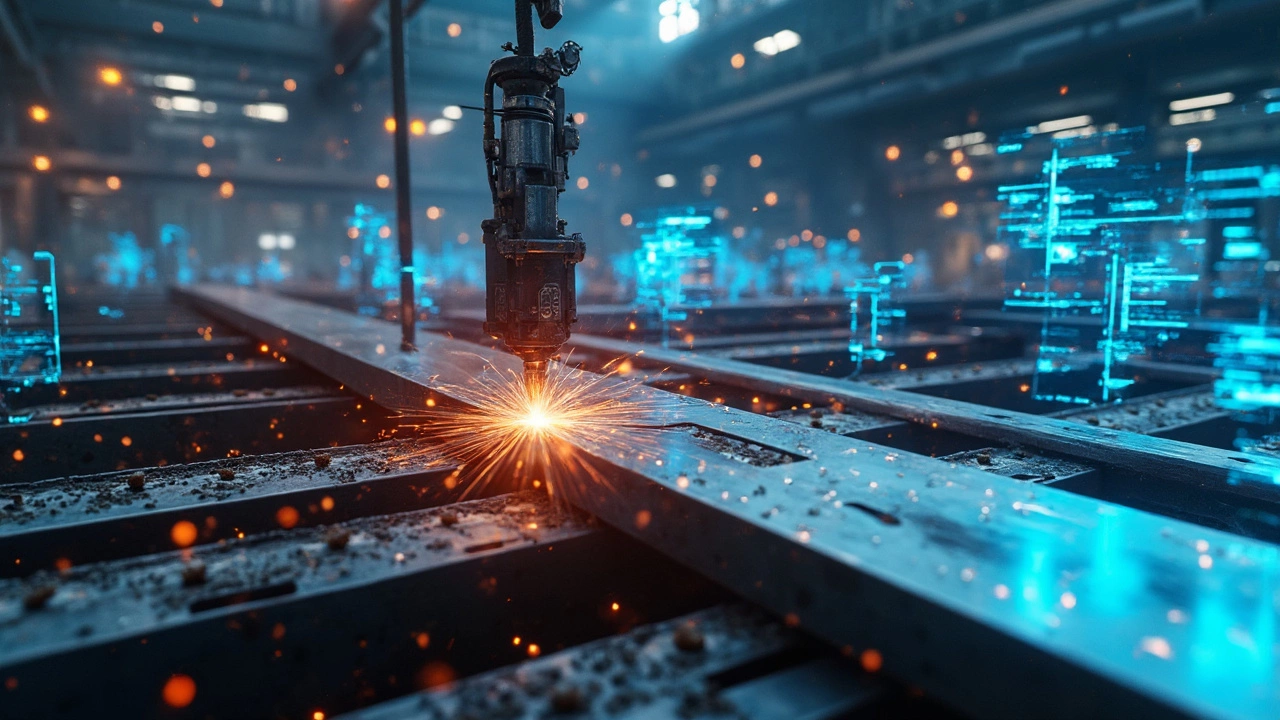
Future Trends in Steel Fabrication
Looking ahead, the steel fabricator industry is prepping for some serious shifts. As technology races forward, it's a game of who can adapt the fastest. Here’s a peek at what the future holds.
Embracing Green Steel
The steel industry is getting greener. Producing steel takes a lot of energy, and with a greater push towards sustainable practices, 'green steel' is on the rise. Companies are investing in methods that reduce carbon footprints, using recycled materials, and cutting down waste.
Advanced Technologies and Automation
Remember how robots were once just sci-fi? Not anymore. Automation is becoming a norm in US steel manufacturing plants. Advanced robotics and AI-driven technology help boost efficiency and precision. Factories are seeing increased output with fewer errors, making the production process smoother and more cost-effective.
Smart Manufacturing Techniques
With the rise of Industry 4.0, smart manufacturing is turning heads. This involves using connected devices to collect data and make real-time decisions. Imagine machines that communicate with each other to optimize production lines – that’s the future right there.
Diverse Applications
The uses of steel are expanding. Beyond construction and automotive, industries like renewable energy and urban development are driving demand. Wind turbines, solar mounts, and even smart city infrastructure are tapping into this versatile material.
Skilled Workforce Evolution
With all these changes, the workforce needs to evolve too. As automation takes over repetitive tasks, there’s a growing demand for tech-savvy workers who can manage and innovate using these advanced systems. Training programs and upskilling initiatives are becoming key.
The world of steel fabrication is clearly heading for exciting times. Innovation and sustainability are at the heart of these trends, promising a dynamic future for all players involved.
